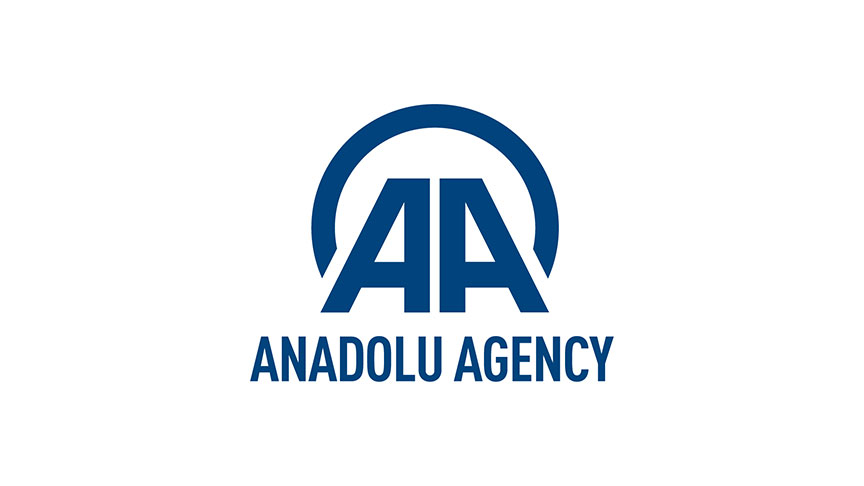The first decade of the 21st century is likely to be marked by the natural gas discoveries in countries around the East Mediterranean Levant basin.
The first gas lottery went to Palestine, the poorest country in the region, with the Gaza Marin in December 2000. However, it was Israel, the richest country of the region, which found and exploited the second gas deposit; the Leviathan.
The Leviathan and the subsequent discoveries were too big for Israel’s domestic market, so it needed to be exported. But to where?
Europe was a natural choice and many companies and institutions started to conduct feasibility studies into a gas pipeline from Israel to Europe via Turkey. Some Turkish companies even inked some memoranda of understanding with Israel for the pipeline construction.
There were many obstacles in front of an Israel-Turkey pipeline. Israel’s unceasing tension between Lebanon and Syria forced the parties to bypass the Lebanese and Syrian territorial waters and opt for a Cypriot connection.
But Cyprus too proved to not to be a much easier option than the Lebanon-Syria route because of the island’s divided status-quo. The division between the Turks and Greek Cypriots was deepened after the Greek Cypriots in the southern part of the island refused the Annan plan in 2004. Moreover, the Greek Cypriot adminstration was encouraged by Israel’s gas discoveries and started similar explorations in the territorial waters of Cyprus which caused further tension with Turkey.
However, it was not the Cypriot problem that inflicted the fatal blow to a possible Israel-Turkey-Europe gas pipeline.
On May 31, 2010, a Turkish vessel – the Mavi Marmara with a cargo of humanitarian aid and some human rights activists onboard from around the world was attacked by Israel when it was en route to the Gaza Strip to provide humanitarian aid. Ten people; nine Turks and a U.S. citizen on board the ship were killed and many more injured.
The event was followed by a public outrage in Turkey and an eventual diplomatic retraction of ambassadors in Ankara and Tel Aviv.
The Israel-Turkey-Europe pipeline was doomed to be forgotten at least for half a decade.
The Greek Cypriots started lobbying in mid 2015 for a pipeline which would bypass Turkey through an Israel-South Cyprus-Greece pipeline and from there onto Europe. This proposal, however was geographically very difficult and expensive. Afterwards, they proposed an alternative; an LNG terminal at Cyprus, another expensive option.
Less than three months later, Qatar proposed to fill the gap with the Qatar-Europe Pipeline which would connect one of the world’s largest gas deposits under the Persian Gulf with Europe. The pipeline was to cross Saudi Arabia, Jordan, Syria, Turkey and from there on to Europe.
The Project looked like the most feasible one to suceed the NABUCCO pipeline, which was to be replaced by the TANAP pipeline later on. Turkey had excellent relations with the prospective transit countries including Syria. So it was only a matter of months for the inking of the initial agreements. Sails were full with the fair winds.
However, there was a strong storm ahead. The project was refused by the most unexpected country; Syria. Speculation abounds that Russia urged President Assad of Syria to refute the proposal as Russia wanted to secure its dominance over natural gas supplies to Europe.
Iran also is likely to have played a role because one third of the deposits under the Persian Gulf belonged to Iran. However, the Syrian Civil war was still in its infancy and Syria’s dependence on Russia and/or Iran was not that vital at that stage.
In the meantime Iran decided to lodge its own rival plan for a $10 billion pipeline to Europe via Iraq and Syria and under the Mediterranean Sea. Assad may also have played his own game to raise the price tag, by giving the green light to both pipeline projects.
The capacity of the project proposed by Iran was half the size compared to the Qatar-European pipeline’s deposits. The route of the project was carefully designed through predominantly Shiite territories. As Asia Times correspondent Pepe Escobar put it, “The Iran-Iraq-Syria pipeline – if it’s ever built – would solidify a predominantly Shi’ite axis through an economic, steel umbilical cord.” (The Secret Stupid Saudi-U.S. Deal on Syria. Oil Gas Pipeline War, Willam Engdahl, Global Research, March 16, 2016)
Today, Iraq is practically divided into three parts; Shia in the middle-south, Sunni (Daesh) in the midlle-west and Kurdish Regional Government (KRG) in the north. Syria has also similar divisions.
It is argued that Assad’s choice in favoring Iran caused the U.S., Qatari and Saudi the determination to oust Assad. These “Assad must go” supporters poured billions of dollars and fire into the Syrian civil war. (Syria: Ultimate Pipelineistan War, Pepe Escobar, Strategic Culture Foundation, Dec. 7, 2015).
Russia’s intervention in the Syrian civil war may have prevented Assad’s overthrow. However, any pipeline from the Persian Gulf to Europe was destined to be forgotten for years if not decades.
As the result, the Syria-Iran-Russia trio has turned all winds into fair winds for the Israel-Turkey-Europe pipeline. Now the time was right to remove political obstacles; namely Turkey-Israel tension and the Cyprus problem.
In fact, Turkey and Israel had traditionally good relations for decades before the Mavi Marmara accident. Turkey and Israel are the only two democracies in the region, so there was no room for personal emotions in their bilateral relations. After a couple of emotional statements by leaders of both countries after the Mavi Marmara incident, wisdom prevailed.
Turkey stipulated three conditions to mend the political relations in December 2015;
1. A formal apology for the people killed in the attack onboard the Mavi Marmara.
2. A reasonable compensation to the families and for other damages.
3. The lifting of the blockade over the Gaza strip.
The first step came from Israel in March 2013 when Israeli Prime Minister Benyamin Natenyahu openly apologized to Turkey’s then Prime Minister Tayyip Erdogan. The compensation issue was actually agreed on long beforehand. It is noteworthy that U.S. President Barack Obama and his administration’s efforts had played a critical role in the outcome.
The only remaining problem was the embargo on the Gaza strip. In fact, Israel had turned a blind eye to the embargo and allowed Turkish humanitarian support to Gaza even at the time of crisis. Only an official lifting of the embargo remains which theoretically should be an easy process.
In December 2015, the two sides officially declared an agreement to normalize bilateral relations and both delegations were working towards this aim. A final agreement is due to be inked in a couple of months if not weeks.
On the other hand, the Cyprus issue has been thrust into the limelight once again and a solution looks closer than ever before. The Turkish and Greek leaders of the island started bilateral meetings last year with unexpectedly positive progress. The recent developments between Turkey and the EU regarding Turkey’s membership talks may play a catalyst role in finding a solution to the Cyprus problem. The EU has announced that it is ready to open some chapters on Turkey’s EU membership process in return for Turkey accepting migrants from Europe back to its soil.
Moreover, Egypt with its recent discoveries should be considered as a potential gas exporter in need of utilizing the same pipeline for gas transfer. Turkey-Egypt relations have deteriorated in recent years. However, it is no secret that King Salman of Saudi Arabia is personally lobbying to mend these relations.
Turkey has unilaterally provided Northern Cyprus with two vital resources; energy and water. These two resources offer a much-need lifeline to the island. The Greek Cypriots, through their rejection of the Annan plan in 2004, have been denied this lifeline. However, if and when a similar plan is put forward again, it may be received in a more conciliatory way and stand a better chance than previously in 2004.
The necessary go-ahead for a pipeline may be arranged even before a final solution on the Island is found. After all, Europe needs more natural gas and the nearest deposits are in Levant.


